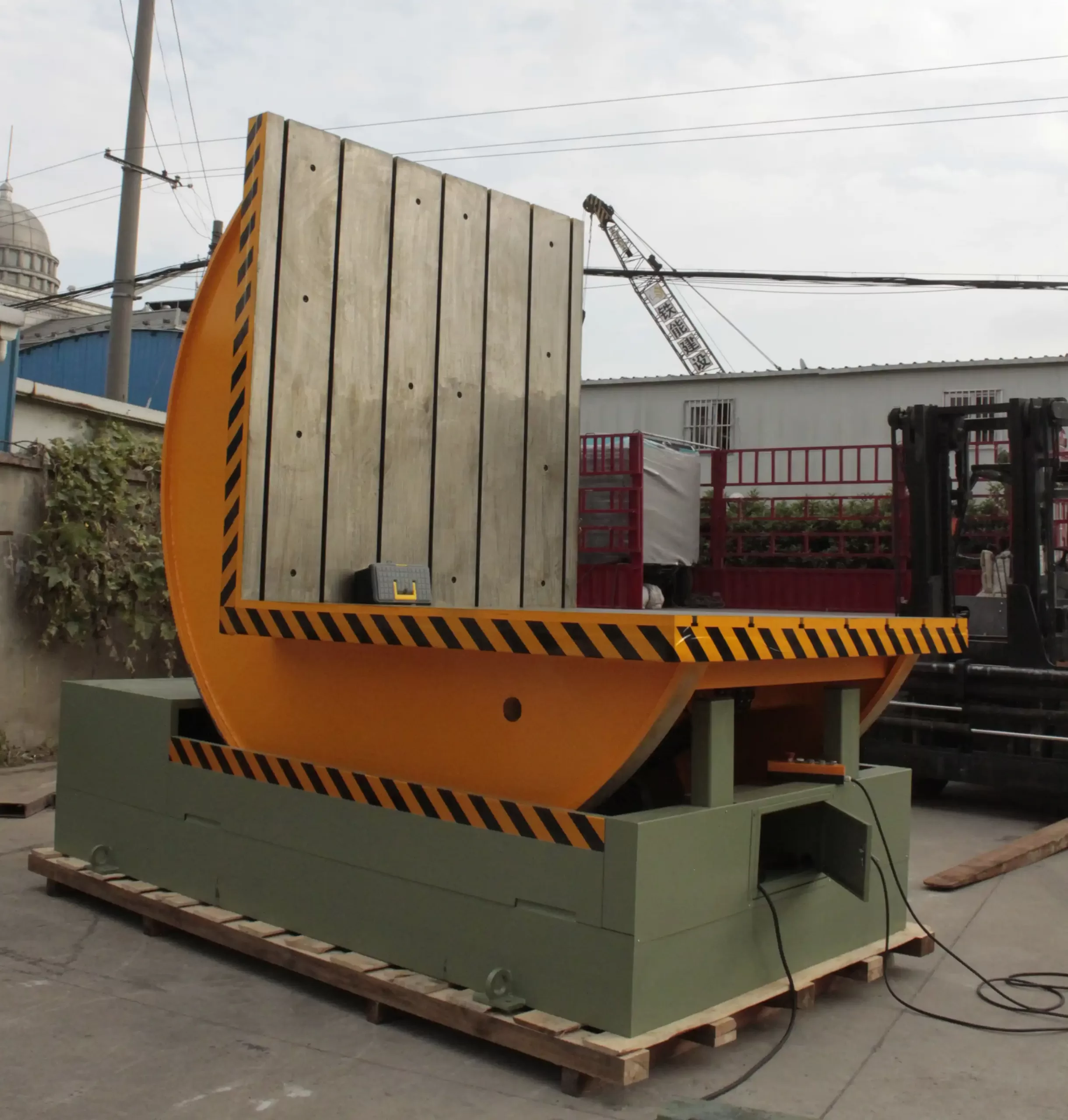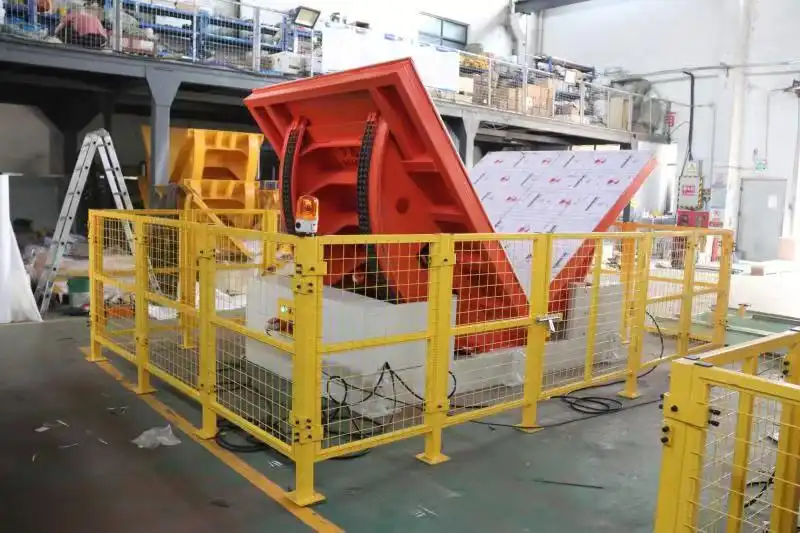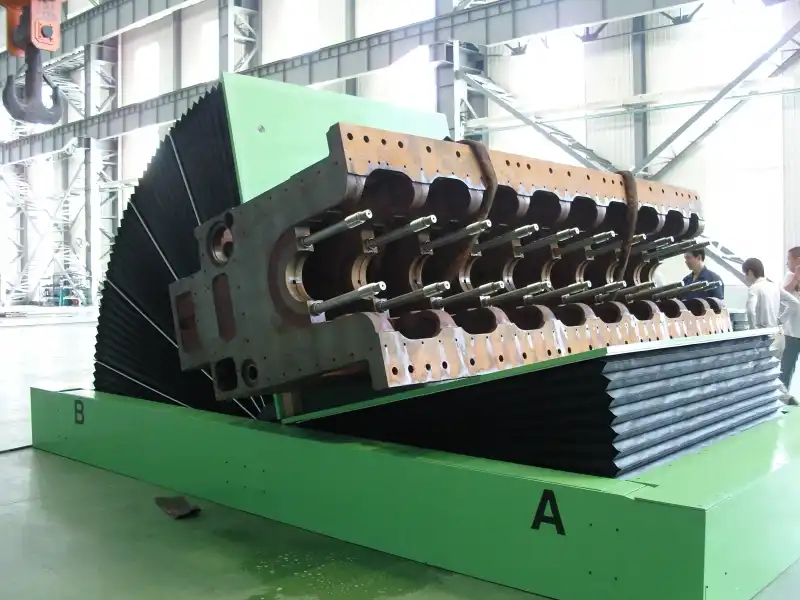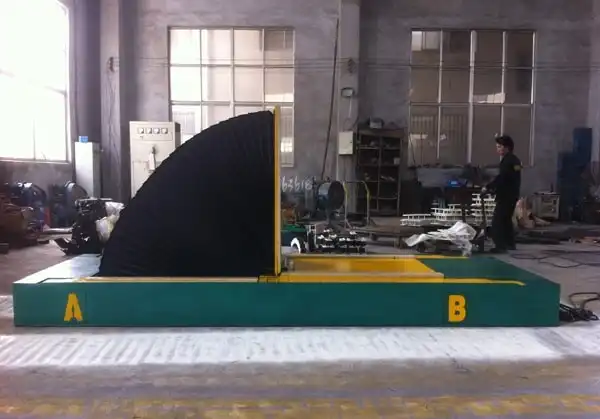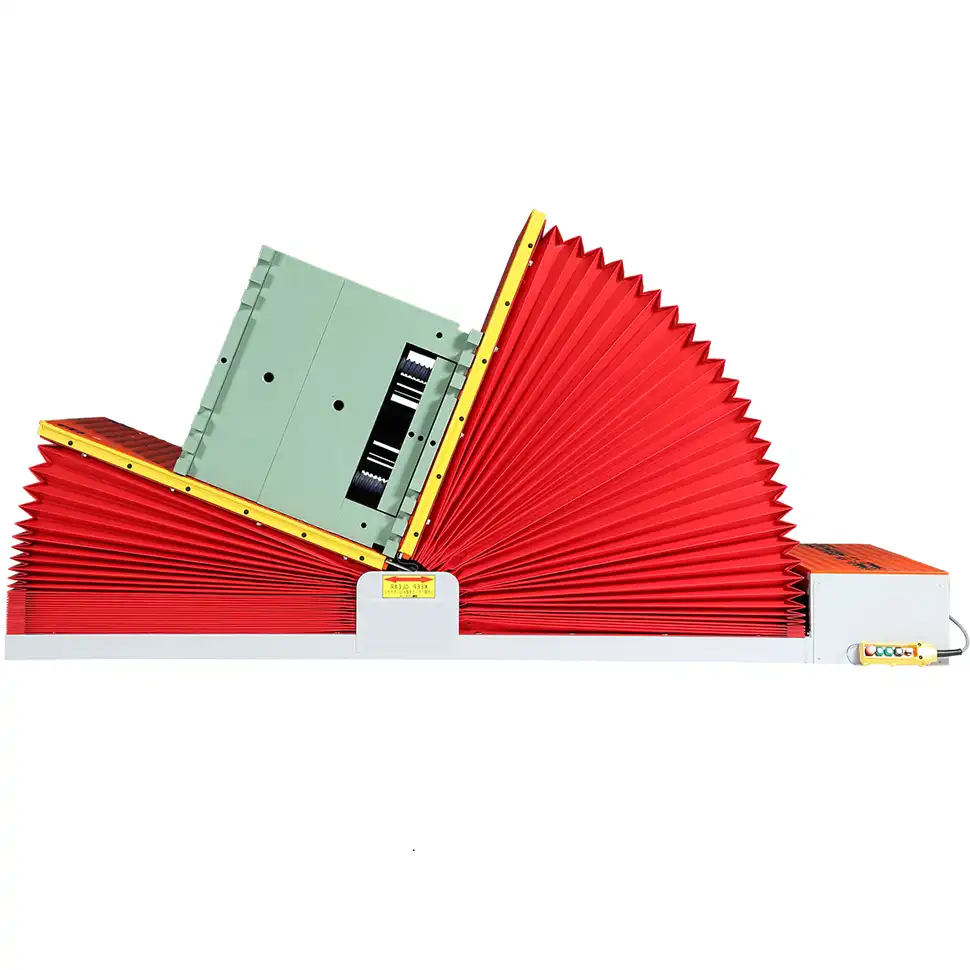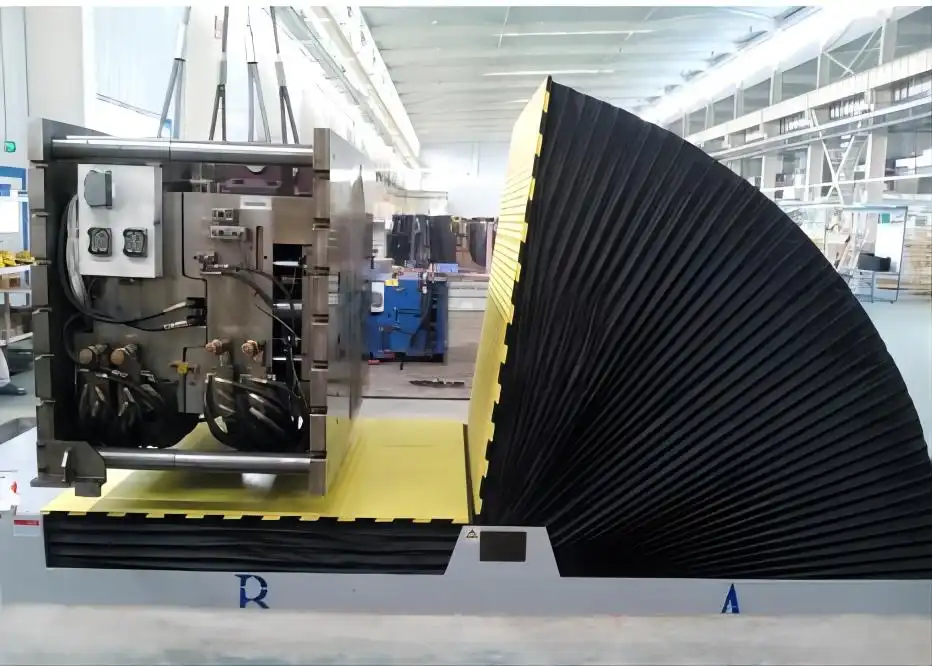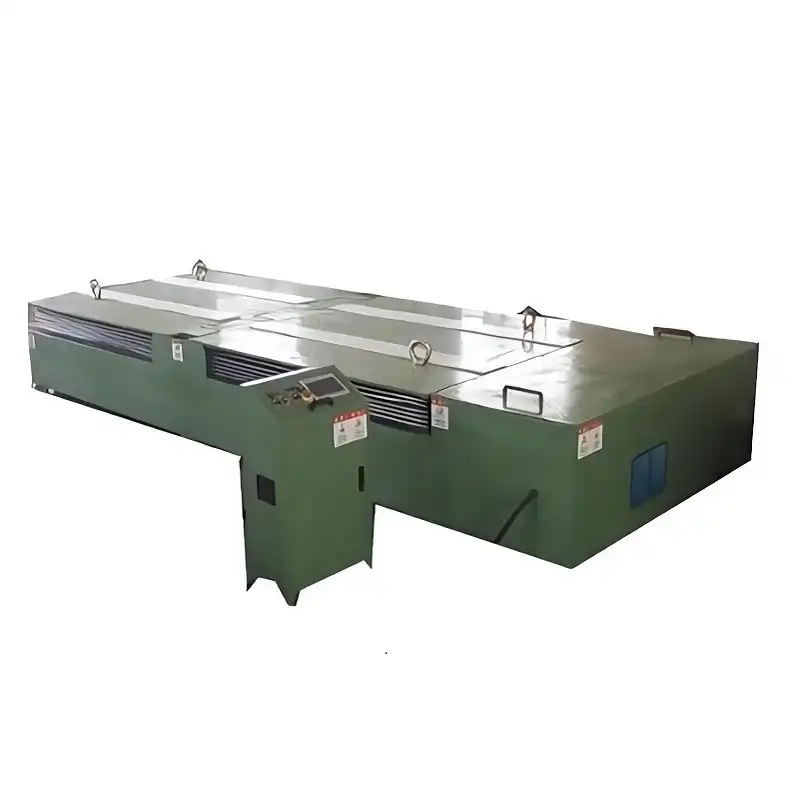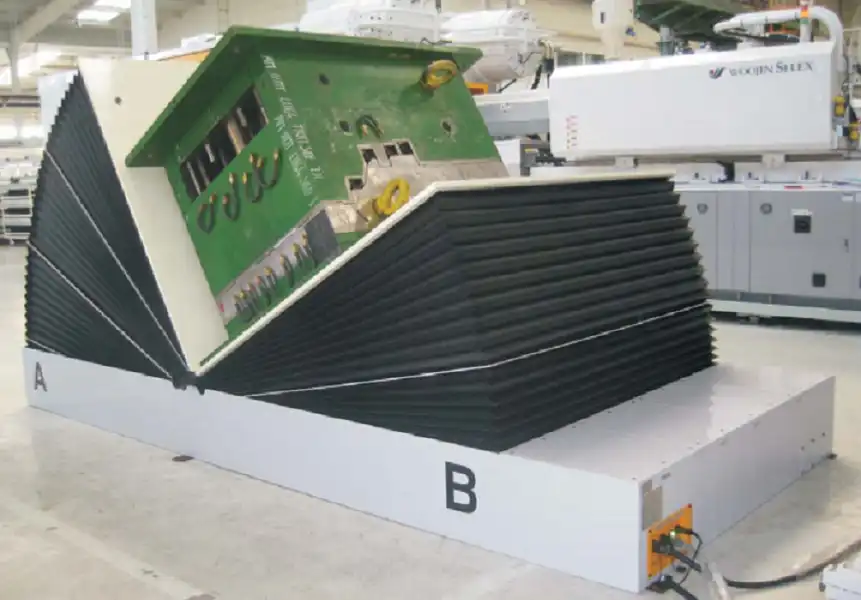The Manufacturer of the Mold Separator: A Comprehensive Guide to Choosing the Right Solution
In the world of injection molding, efficient handling of molds is critical to maintaining smooth operations. Mold separators play a key role in this process by facilitating safe, reliable, and efficient mold separation, helping manufacturers to reduce downtime and prevent damage to costly molds. Choosing the right mold separator can be a game-changer for businesses looking to optimize their production lines, improve workplace safety, and ensure consistent quality output.

This article explores the various considerations for selecting the best mold separator, tailored to the unique needs of different industries, particularly in injection molding and plastic manufacturing. Whether you are a small manufacturer looking for an affordable option or a large-scale operation needing high-precision equipment, understanding the factors that influence the performance and safety of mold separators is essential.
1. Best Mold Separator for Injection Molding: Key Considerations
When selecting the best mold separator for injection molding, businesses must first evaluate their specific needs, focusing on the size, weight, and type of molds they handle. Injection molding involves highly precise molds that often require careful handling to avoid damage. Therefore, selecting a mold separator with features that protect the integrity of these molds is crucial.
The best mold separators for injection molding will typically include automated features that minimize manual labor and speed up the mold separation process. Automation helps not only in reducing human error but also in maintaining consistency in mold separation, which is vital for producing high-quality plastic components. Safety features, such as emergency stop mechanisms and load monitoring, further enhance the functionality of the mold separator, ensuring both product integrity and worker safety.
In addition to these factors, it’s important to consider the durability of the mold separator. Injection molds are usually made of steel or aluminum, meaning the separator must be robust enough to handle frequent use without wearing down over time. A good mold separator should also be easy to maintain, with readily available replacement parts and minimal downtime for repairs.

2. Automatic Mold Separator for Plastic Molding: Improving Efficiency
In plastic molding, the use of automatic mold separators can significantly enhance productivity by reducing the time and effort required to separate molds after each production cycle. For companies looking to streamline their operations, investing in an automatic system can offer significant long-term benefits.
Automatic mold separators are designed to quickly and safely separate large or heavy molds, allowing for faster mold changes and reduced labor costs. These systems are particularly valuable in high-volume production environments, where frequent mold changes are necessary to keep up with demand. By automating the separation process, manufacturers can minimize delays and ensure that production lines run continuously with minimal downtime.
Moreover, automatic systems are often equipped with sensors and automated controls that ensure the mold is separated smoothly, without causing damage to either the mold or the parts produced. This level of precision is essential for manufacturers who produce intricate plastic components, as any damage to the mold could lead to costly rework or production errors.
3. Mold Separator Machine for Large Molds: Handling Heavy-Duty Operations
Handling large molds presents unique challenges, especially in industries that require heavy-duty mold management. In these environments, a mold separator machine for large molds is not only necessary for efficient handling but also for ensuring worker safety and preventing mold damage.
Large molds used in industries like automotive or aerospace manufacturing can weigh several tons, making manual separation impractical and dangerous. A mold separator machine designed for these large-scale operations must have the capacity to lift, move, and separate the molds without causing undue stress on the equipment or operators.
Heavy-duty mold separators often include features such as hydraulic lifting systems or motorized turntables that can easily manipulate large molds, allowing for smooth and controlled separation. These machines are typically equipped with reinforced frames and heavy-duty lifting arms to handle the weight and size of industrial molds, ensuring that they remain intact during the separation process.
Additionally, for businesses handling large molds, safety is a paramount concern. The use of mold separators with advanced safety features like load sensors, emergency stops, and operator protection systems ensures that accidents are minimized, and molds remain undamaged. This investment in safety also helps manufacturers comply with workplace safety regulations, reducing the risk of injury and liability.
4. Industrial Mold Separator for Manufacturing: The Backbone of Efficient Production
In large-scale manufacturing environments, the use of an industrial mold separator is indispensable. These machines are specifically engineered to meet the demands of high-volume production where time is money, and efficiency is key. Industrial mold separators allow manufacturers to handle complex, heavy molds with ease, making them a vital asset in industries such as automotive, aerospace, and electronics.
One of the primary benefits of an industrial mold separator is its ability to reduce production downtime. By automating the mold separation process, manufacturers can significantly decrease the time it takes to change molds between production cycles. This quick turnaround translates directly into higher production rates and better utilization of machinery.
In addition to speed, precision is another critical factor in industrial settings. Mold separators for manufacturing are equipped with highly calibrated controls that ensure each mold is handled with care, preventing damage and ensuring that the molds can be reused for long-term production. This is especially important in industries that rely on highly detailed and expensive molds, where even the slightest damage can lead to costly production issues.
5. Mold Separator with Safety Features: Prioritizing Workplace Safety
Safety should never be compromised in any manufacturing operation, and that is especially true when dealing with heavy and complex molds. A mold separator with safety features is designed to reduce the risks associated with mold handling, helping to protect workers and equipment alike.
One of the most important safety features in modern mold separators is the emergency stop button, which allows operators to immediately halt the machine in the event of a malfunction or hazard. This feature can be life-saving, especially in fast-paced industrial environments where quick reactions are necessary to prevent accidents.
Another essential safety feature is the use of load sensors, which monitor the weight and balance of the mold during separation. If the sensors detect an imbalance or excessive strain, the machine can automatically adjust its operations or stop to prevent further risk. This prevents dangerous situations, such as molds tipping over or being improperly handled, which can lead to serious injuries or costly damage.
For manufacturers focused on worker safety and compliance with occupational safety regulations, investing in a mold separator with advanced safety features is a smart choice. Not only does it help to create a safer working environment, but it also reduces the risk of workplace accidents, which can result in downtime, liability issues, and increased insurance costs.
6. How to Choose a Mold Separator for Your Production Line
Choosing the right mold separator for your production line involves considering several key factors that align with your operational needs. The first step is to evaluate the type of molds you are handling. For example, businesses dealing with plastic injection molds may require a separator that offers high precision and gentle handling, while those working with large industrial molds may prioritize durability and lifting capacity.
Another critical consideration is the automation level. Depending on the size and complexity of your production line, you may benefit from either a fully automated or semi-automated mold separator. Fully automated systems are ideal for high-volume production environments, where speed and consistency are essential. On the other hand, semi-automated solutions may be more cost-effective for smaller operations, where manual intervention is still feasible.
The size and weight capacity of the mold separator are also important. Be sure to choose a machine that can handle the maximum dimensions and weight of your molds. Overloading a separator that is not designed for heavy-duty tasks can lead to equipment failure, mold damage, and potential safety risks.
Finally, consider the maintenance requirements of the machine. A mold separator that requires frequent repairs or downtime can negatively impact production efficiency. Look for models that are known for their durability and ease of maintenance, and ensure that your supplier provides reliable after-sales support and replacement parts.
7. Mold Splitter vs. Manual Mold Separation: Which is Better?
A key decision for manufacturers is whether to invest in a mold splitter or continue with manual mold separation. Both approaches have their advantages, but in most cases, the mold splitter is the more efficient and safer option, particularly for larger operations.
Manual mold separation can be labor-intensive and risky, especially when handling large or intricate molds. This method requires skilled workers to manually separate the molds, which can lead to fatigue, human error, and accidents. While manual separation might be acceptable for smaller, lightweight molds, it becomes impractical and unsafe when dealing with heavier industrial molds.
In contrast, a mold splitter automates much of the separation process, reducing the reliance on manual labor. This automation not only speeds up production but also decreases the likelihood of human error and mold damage. Mold splitters are equipped with precise controls that allow for the accurate separation of molds, ensuring that both the mold and the final product remain intact.
When considering the cost vs. benefits analysis, mold splitters often prove to be a worthwhile investment. While the initial cost of purchasing and installing the machine may be high, the long-term savings from reduced labor costs, faster production times, and fewer mold-related errors make it a financially sound decision.
8. Efficient Mold Separator for Reducing Downtime
Downtime in a production environment can lead to significant financial losses, particularly in industries with tight delivery schedules. An efficient mold separator can drastically reduce this downtime by streamlining the mold change process and ensuring that production runs smoothly.
One of the main advantages of modern mold separators is their speed and precision. Automated mold separators are designed to quickly and safely separate molds, minimizing the time between production cycles. This efficiency is particularly valuable for high-volume manufacturers, where even a small delay in the mold changeover process can lead to hours of lost productivity.
In addition to reducing downtime during mold changes, efficient mold separators also contribute to lower maintenance needs. By handling molds with care and precision, these machines reduce the wear and tear on both the molds and the machinery, leading to fewer breakdowns and repairs. This, in turn, extends the lifespan of both the molds and the mold separator itself, further reducing downtime.
9. Mold Separator for Heavy-Duty Mold Handling: Built to Last
For industries that handle heavy-duty molds, such as automotive or aerospace manufacturing, a robust and reliable mold separator is essential. These molds can be massive, weighing several tons, and require specialized equipment to safely lift, move, and separate them.
Heavy-duty mold separators are designed with reinforced frames, hydraulic lifting systems, and motorized arms that can easily handle the weight and size of these large molds. These features ensure that even the heaviest molds are separated smoothly and safely, without causing damage to the mold or the machine.
10. Benefits of Using a Mold Separator in Injection Molding
Using a mold separator in injection molding offers several benefits, especially for businesses looking to improve operational efficiency and product quality. One of the primary advantages is the ability to reduce mold damage during the separation process. Injection molds are often delicate and expensive, and improper handling can lead to costly repairs or replacements. By automating the separation process, a mold separator ensures that the molds are handled with care, preserving their lifespan and reducing wear and tear.
Another benefit is the increase in production efficiency. With a mold separator, manufacturers can speed up the mold changeover process, allowing for faster cycle times and higher throughput. This is particularly important in industries where tight production schedules must be met. The automation provided by mold separators helps eliminate bottlenecks in the workflow, resulting in smoother operations.
Furthermore, the use of a mold separator can improve worker safety. Manual mold separation can be dangerous, especially when dealing with heavy molds. A mold separator minimizes the need for manual labor, reducing the risk of injuries caused by lifting or handling heavy molds. This focus on safety not only protects workers but also helps businesses comply with occupational health and safety regulations.
11. Mold Separator System for Improved Workplace Safety
Incorporating a mold separator system into your production line can significantly enhance workplace safety. Mold separation is a process that requires careful handling due to the heavy and complex nature of the molds used in manufacturing. Automating this process with a mold separator reduces the reliance on manual labor, thereby lowering the risk of accidents.
Many modern mold separators are designed with safety mechanisms that protect both operators and equipment. For instance, sensors can detect any misalignment or imbalance during the separation process, preventing the mold from tipping or falling. Additionally, features such as emergency stop buttons and load monitoring systems allow operators to intervene quickly if any issues arise, further ensuring a safe working environment.
Improved safety also translates to reduced downtime, as fewer accidents mean fewer interruptions in the production process. By investing in a mold separator system, manufacturers can create a safer, more efficient workplace that is less prone to accidents and equipment failures.
12. Mold Separator Solutions for Plastic Manufacturing: Customization is Key
Plastic manufacturing is a diverse industry with varying needs, depending on the type of product being produced. As such, it’s essential to choose custom mold separator solutions that fit the specific requirements of your manufacturing process. Whether you’re dealing with small, intricate molds for plastic parts or large, industrial molds for heavy-duty components, the right separator can make all the difference.
Customization allows manufacturers to tailor their mold separator systems to their unique production needs. For example, if you’re working with complex mold designs that require delicate handling, a separator with precision controls and automated features can help maintain the integrity of the molds. Alternatively, for larger-scale operations, a mold separator with heavy-duty lifting capabilities and robust safety features may be more appropriate.
By investing in a customized solution, manufacturers can improve both efficiency and product quality. A mold separator that is designed specifically for your operation ensures that the molds are handled properly, reducing the risk of errors and enhancing the overall reliability of your production line.
13. How Mold Separators Prevent Mold Damage: Ensuring Long-Term Usability
One of the most significant advantages of using mold separators is their ability to prevent mold damage. Mold separators automate the delicate process of separating molds, reducing the likelihood of human error that can lead to mold damage. This is particularly important in industries such as injection molding, where the molds are often highly detailed and expensive to replace.
By ensuring that molds are handled gently and consistently, mold separators help to extend the lifespan of molds. This means fewer repairs or replacements, which translates to lower operational costs in the long run. Additionally, preventing mold damage ensures that the final products maintain high levels of quality, as damaged molds can lead to defective parts or poor-quality finishes.
Using a mold separator also helps to avoid surface scratches or misalignments that can occur during manual mold separation. This is especially critical when working with molds that require a perfect fit to create precise plastic components. The automation provided by mold separators guarantees that molds are separated and stored in a way that preserves their original condition, ensuring they can be reused for multiple production cycles.
14. High-Precision Mold Separator for Plastic Parts: Enhancing Product Quality
For manufacturers of high-precision plastic parts, a mold separator with precision control features is essential. These separators are designed to handle the fine details of plastic molds, ensuring that every separation is performed with the utmost care. High-precision mold separators are typically equipped with automated alignment systems and sensors that ensure the molds are correctly positioned before separation, minimizing the risk of errors.
The precision provided by these separators is especially important for industries such as medical device manufacturing or electronics, where even the smallest imperfection can result in product failure. By investing in a high-precision mold separator, manufacturers can improve product quality, reduce defects, and ensure that every part meets the necessary standards.
Additionally, the use of a high-precision mold separator helps to improve the consistency of production. With manual separation, there is always the possibility of variation from one cycle to the next. However, with an automated separator, manufacturers can maintain the same level of precision and care in every production cycle, ensuring consistent results and fewer rejected parts.
15. Affordable Mold Separator for Small Manufacturers: Balancing Cost and Efficiency
Small manufacturers often face the challenge of balancing cost with operational efficiency. While high-end mold separators can offer advanced features and automation, they may be outside the budget of smaller businesses. However, this doesn’t mean that small manufacturers have to compromise on quality or safety.
There are several affordable mold separator options available that provide the essential features needed for efficient and safe mold handling. These machines may offer a more basic level of automation but can still significantly reduce manual labor and improve productivity. Additionally, smaller mold separators are often more compact, making them ideal for manufacturers with limited floor space.

When selecting an affordable mold separator, it’s important to consider the total cost of ownership. A cheaper upfront price may be appealing, but if the machine requires frequent maintenance or has a shorter lifespan, it could end up costing more in the long run. Look for separators that are known for their reliability and low maintenance requirements, ensuring that you get the most value for your investment.
Conclusion: Choosing the Right Mold Separator for Your Needs
Choosing the right mold separator is a critical decision that can have a lasting impact on your production line’s efficiency, safety, and product quality. Whether you’re looking for a high-precision machine for delicate plastic parts, a heavy-duty separator for industrial molds, or an affordable solution for a smaller operation, there’s a mold separator designed to meet your needs.
The key is to assess your specific requirements, such as mold size, weight, production volume, and safety concerns. By investing in the right mold separator, manufacturers can reduce downtime, prevent mold damage, improve workplace safety, and ultimately enhance the overall efficiency of their operations. As the industry continues to evolve, the demand for efficient and reliable mold handling solutions will only grow, making mold separators an indispensable part of any modern manufacturing facility.



